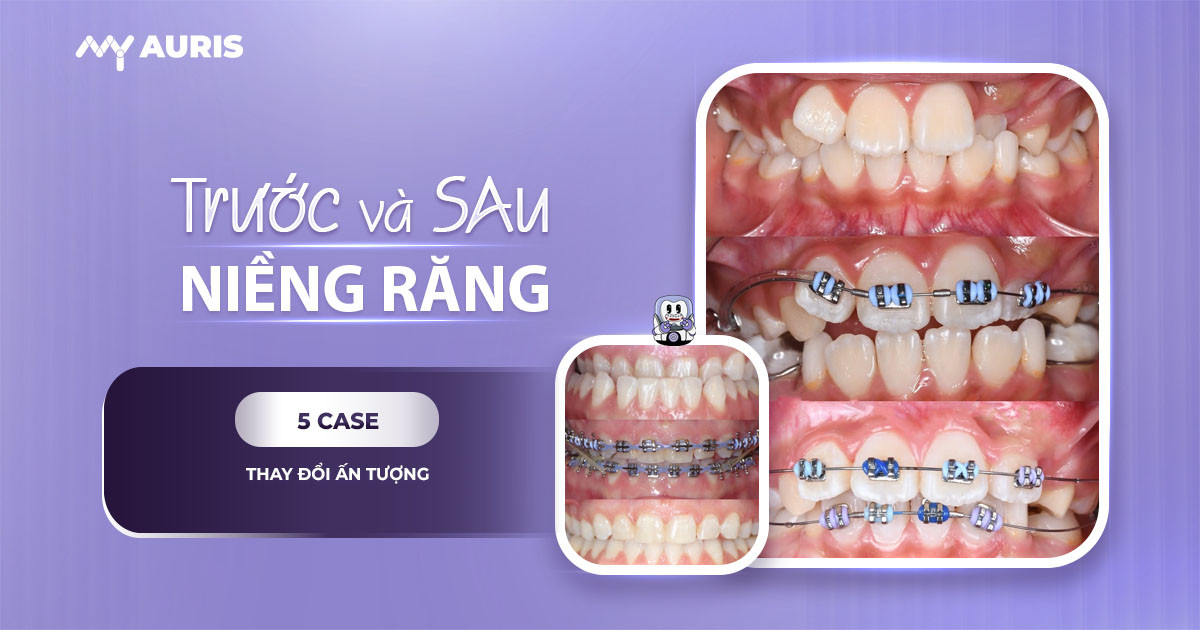Orthodontic treatment, commonly known as braces, is a dental method that helps improve occlusion (bite) and realign teeth. Before and after braces, the face and teeth undergo noticeable changes if treated correctly. This article by My Auris will analyze in detail the changes before and after braces, based on many real-life images. Additionally, readers will be provided with important tips to maintain stable results after treatment. This is essential information for anyone considering whether or not to get braces.
What’s Special About Facial Changes Before and After Braces?
The orthodontic process not only improves chewing function but also brings noticeable positive changes to the face. For individuals with misaligned teeth that impede occlusion, leading to a tense, asymmetrical face, or even postural disorders such as a forward head posture and tilted shoulders, correcting both dental arches with braces will restore proper facial correlation. As a result, facial muscles relax, points of obstruction are released, creating a more relaxed, gentle, and balanced appearance.
Cases of facial asymmetry caused by a mispositioned mandible will also significantly improve with braces, leading to a more balanced and harmonious face after the adjustment process.
Another interesting point is the nasal angle. For individuals with protrusive teeth, as the upper lip retracts after braces, the nose may appear higher and more defined. However, it’s important to understand that a high nose is primarily due to cartilage development and nostril thickness, not related to the dental or jaw bone structure. Therefore, braces only contribute to a more harmonious face, creating the *impression* of a higher nose.
The chin area also undergoes noticeable changes. Cases involving bite elevation, retraction of the lower jaw, or leveling of the lower teeth will make the chin appear more slender, sometimes longer, creating a V-line shape – a modern beauty standard.
One cannot overlook the most significant difference: the teeth after braces are regular, healthy, and easier to clean. Firm, pink gums with fewer inflammations also contribute to a healthy, attractive smile, boosting confidence and making the face look more complete and appealing.
Finally, the lips – an element often affected by protrusive upper teeth, leading to everted lips, fullness in the canine area, and a lack of definition. After retracting the upper and lower jaws, the lips become more natural, not flared, with the lip area around teeth #2 and #3 slightly curved inward, making the lips look fuller and more centralized, thereby creating softer contours for the entire face.
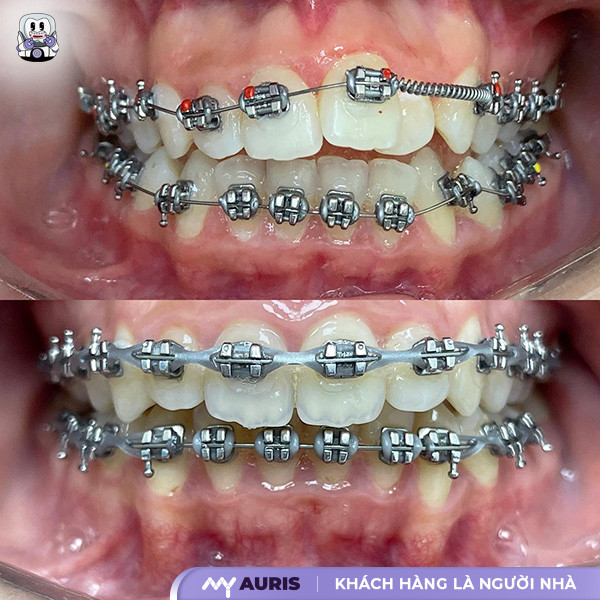
Before and After Braces at My Auris Dental Clinic
Braces, also known as orthodontics, is a dental term referring to a method that uses dental appliances to arrange and move teeth into their correct positions on the dental arch. This is a widely applied solution in modern dentistry.
Thanks to the strong development of dental equipment and technology, getting braces is now much more comfortable. Gone are the worries about discomfort or inconvenience during orthodontic treatment; patients can confidently wear braces and live comfortably in their daily lives.
Below are real-life cases of braces at My Auris Dental Clinic, providing you with a clearer view of the effectiveness and changes after orthodontic treatment:
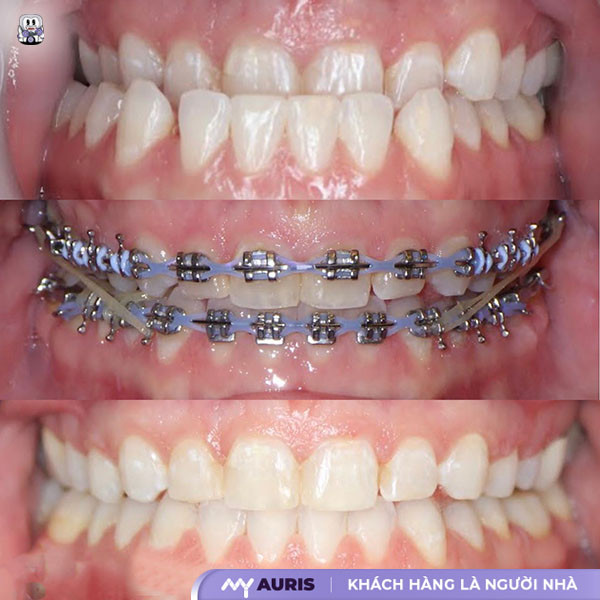
Before and After Underbite Braces
Before underbite braces, many people have a face with a protruding lower jaw and a recessed upper jaw, creating a “broken” or unbalanced facial appearance. Not a few cases also experience speech impediments, affecting daily communication.
An underbite (also known as a Class III malocclusion) is a condition where the lower jaw bone develops excessively long, protruding too far forward, while the upper jaw bone is recessed. This not only affects aesthetics but also causes severe chewing dysfunction. When the relationship between the two dental arches is incorrect, tearing food becomes less efficient, potentially leading to long-term digestive problems.
To prevent teeth from weakening and early loss, individuals with an underbite should get braces early at reputable dental clinics. There, you will receive thorough consultation from a dentist about the appropriate treatment method, which will significantly improve both the aesthetics (before and after underbite braces) and jaw function. Do not let this condition persist, as it can affect overall health and aesthetics.
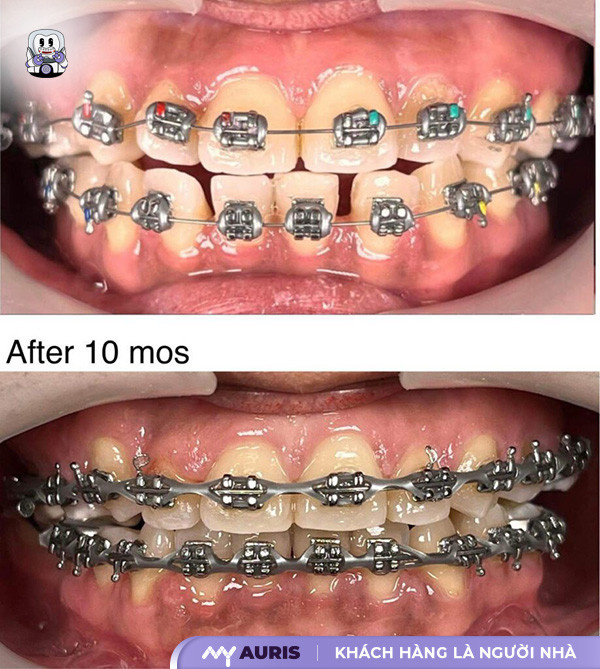
Customer Images Before and After Braces for Gapped Teeth
Gapped teeth (diastema) occur when teeth are spaced far apart, with gaps appearing between them, often due to missing teeth, smaller than average tooth size, unbalanced jaw bone structure, or a wide dental arch. These factors not only affect aesthetics but also cause difficulties with chewing and oral hygiene.
Khánh’s braces journey has been ongoing for 1 year, and although there is still half of the treatment left, the changes are already very noticeable. Through the customer images before and after braces for gapped teeth, one can see a significantly improved smile. Khánh shared that she feels more confident when smiling and more comfortable in daily communication.
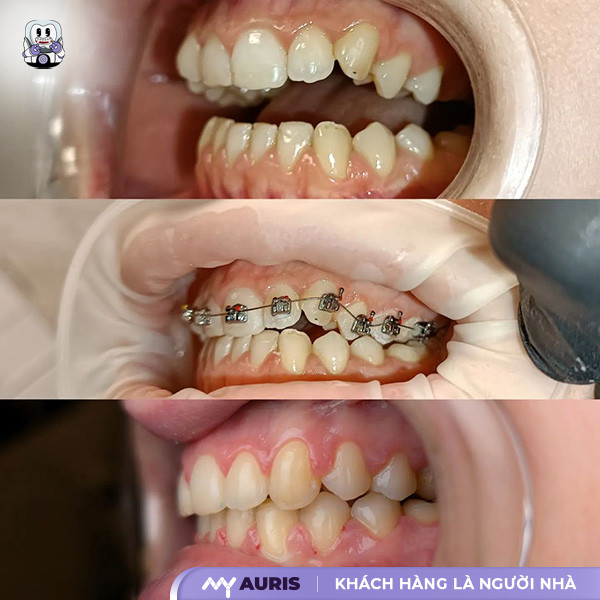
How Does the Face Change Before and After Braces for Protrusive Teeth?
Protrusive teeth (or overbite) is a condition where the upper teeth protrude excessively, causing the chin to recede, making it difficult to close the mouth, and often leading to a wrinkled chin. This makes the face look tense and unnatural; sunken cheeks make the cheekbones appear higher, resulting in an overall unbalanced facial appearance.
After braces, not only will one have regular teeth, but also a noticeably changed face. When the mouth can close naturally, the chin will appear longer, the nose will look higher, and the cheeks will become fuller, no longer tense as before. However, if one already has high cheekbones, a slight weight gain might be needed to add fullness and cover this feature, as orthodontics inherently cannot change the position of the cheekbones.
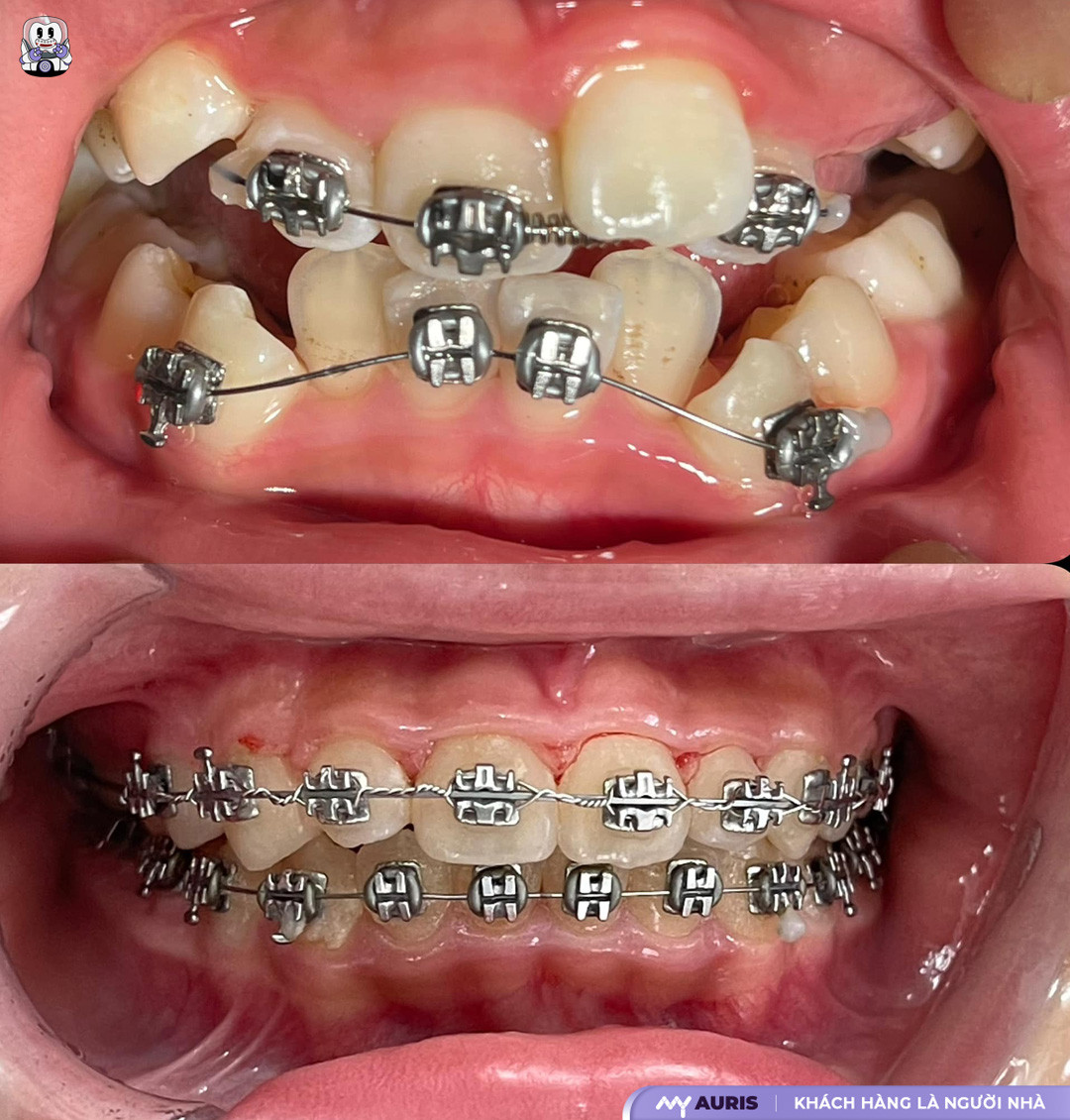
Face Before and After Braces for Open Bite Treatment
An open bite is a common cause of a long face, especially when the lower facial third is disproportionate to the upper facial third. This also causes the upper lip to flare out and creates a horizontal smile line, making the smile appear naive and unnatural.
However, after open bite orthodontic treatment, the face will be aesthetically rebalanced, more harmonious with the facial thirds. Simultaneously, gaps between teeth are naturally closed, making the face before braces distinctly different from after treatment – both aesthetically and functionally.
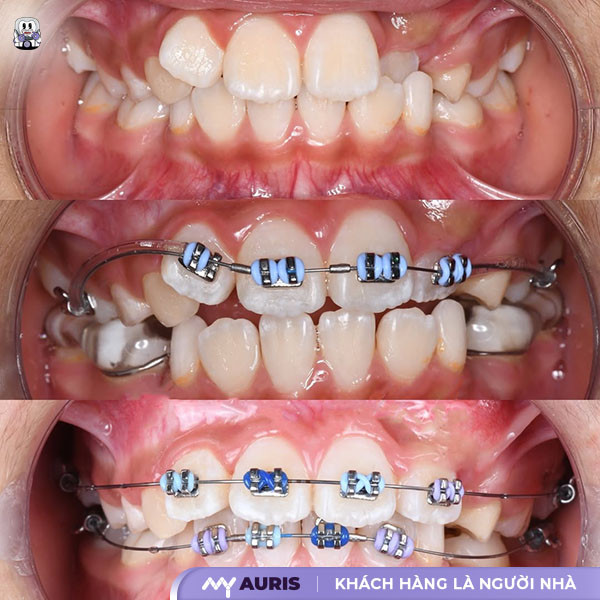
Noticeable Facial Changes Before and After Braces for Crooked Teeth and Severe Canine Protrusion
Before braces, individuals with crooked teeth or severe canine protrusion often had a “mouth full of teeth” appearance when smiling, making the overall face less harmonious. The orthodontic process of narrowing the arch helps move misaligned teeth into alignment, thereby reshaping the oral framework and reducing the appearance of a wide mouth. Additionally, jaw retraction contributes to a more harmonious nasolabial angle, bringing balanced aesthetics to the face after braces.
How Does the Side Profile Change Before and After Braces?
Cosmetic orthodontics uses dental appliances to exert a gentle, continuous force on the teeth, gradually moving them to their desired positions. This process affects both the root complex and the alveolar bone, bringing positive changes to the face. Many people notice after orthodontic treatment that their lips are no longer protrusive or recessed, and their nose appears higher and more refined, giving them an attractive “god-tier” side profile.
These significant changes boost patients’ confidence, especially regarding their side profile before and after braces. The transformation in appearance is clear evidence of the positive outcomes brought by orthodontic treatment.
Degree of Facial Change Before and After Braces in Different Age Groups
Many wonder if braces truly change the face. The answer is yes, but the extent of change varies depending on age and initial dental condition. During orthodontic treatment, adjusting tooth position and occlusion helps the overall face become more harmonious. This occurs because facial structure is directly influenced by a complete dental arch and the even alignment of teeth.
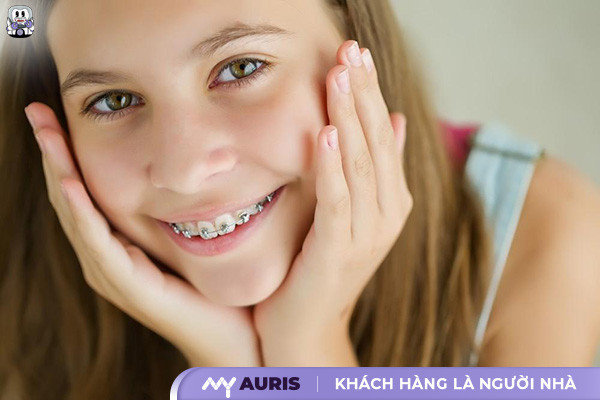
Braces in Children
Facial changes in children are often more pronounced than in adults. For example, if a child with an overbite is treated promptly, it can improve not only the bite and gapped front teeth but also the lip protrusion. Consequently, the jaw bone structure and overall facial appearance also change positively.
The significant benefit of early orthodontic treatment is a shorter treatment duration, higher effectiveness, and the prevention of issues such as skeletal protrusion, underbite, or facial asymmetry later in life. Children typically have beautiful, well-aligned teeth and a correct bite after braces removal, feeling more confident in communication.
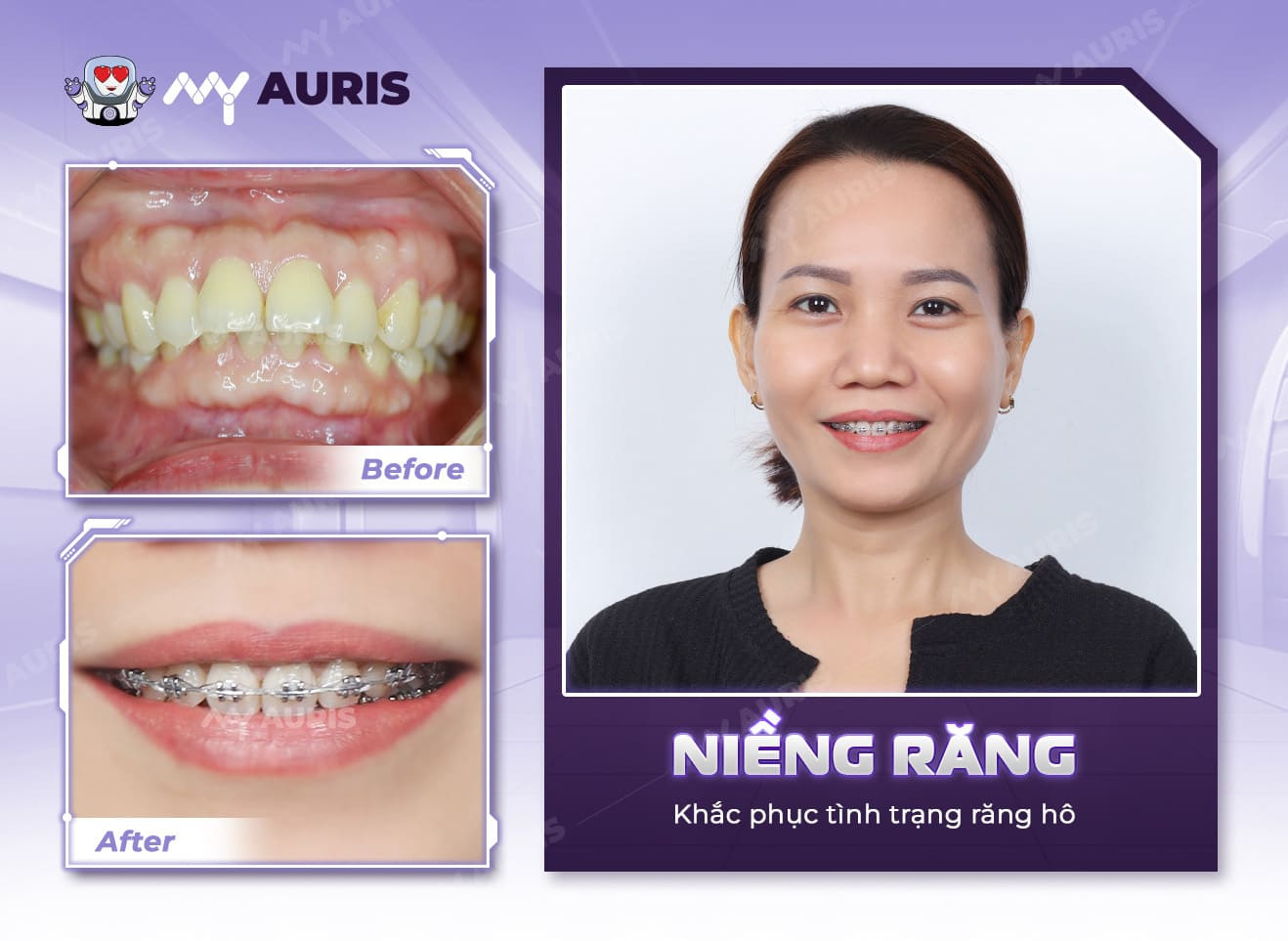
Braces in Adults
In adults, orthodontic treatment faces more challenges because the jawbones have hardened, and tooth movement occurs more slowly. However, with the development of orthodontic appliances, such as Invisalign clear aligners or ceramic braces, treatment remains effective if the patient is persistent and adheres to instructions.
Facial changes after braces in adults are not always overly dramatic but still bring many benefits. Individuals with a recessed chin, slight underbite, or misaligned teeth often find their face becoming more slender, lips no longer protruding, and a more correct bite, facilitating easier chewing and improving overall oral health.
How Incorrect Orthodontic Treatment Can Negatively Affect You
Some common consequences include:
Teeth moving in the wrong direction: If the orthodontic treatment plan is incorrect, the pulling force from braces or aligners will cause teeth to move outward or crowd together. As a result, the teeth will not only fail to align properly but also become difficult to clean, prone to cavities, and gum inflammation.
Incorrect bite (malocclusion): After braces, if the bite is not correctly adjusted, the patient may experience crossbite, open bite, or deep bite. This affects chewing function, speech, and facial aesthetics.
Facial deformation: An angular face can become unbalanced if braces are applied incorrectly. Many people report a recessed chin, sunken cheeks, and loss of harmonious features after braces due to incorrect manipulation of the jawbone structure.
Jaw muscle and temporomandibular joint pain: Prolonged uneven bite can lead to temporomandibular joint disorder (TMJD), causing pain and fatigue when chewing and speaking, and even chronic headaches.
Alveolar bone loss and loose teeth: Incorrect orthodontic treatment can lead to the resorption of bone supporting the teeth. In severe cases, teeth may become loose, risking tooth loss even at a young age.
Gingival hyperplasia and chronic gingivitis: Unevenly spaced teeth make oral hygiene difficult. Food debris easily accumulates, leading to swollen, red, bleeding gums, the formation of periodontal pockets, and chronic inflammation.
Failure to achieve desired results: After a long period of wearing braces or Invisalign clear aligners, if the technique is incorrect, the results after treatment may not meet expectations. The patient might be forced to undergo re-treatment or live with an aesthetically compromised dentition.

Tips for Achieving Good Results After Braces
The following tips will help you maintain straight, well-aligned teeth, a correct bite, and a harmonious, confident face long-term:
Strictly Follow Your Orthodontist’s Instructions
Your dentist understands the structure of your face and teeth. Each case will have a unique dental treatment plan. Failure to adhere to follow-up appointments, abandoning the bite adjustment process, or not wearing braces for the prescribed duration can affect the post-braces results. Please adhere to the retention period prescribed by your dentist, typically from 6 months to 2 years.
Proper Oral Hygiene During Braces Treatment
The average treatment duration ranges from 18 to 24 months, during which you must maintain clean teeth to prevent cavities, gingivitis, and soft tissue hyperplasia. Use a specialized toothbrush for braces, combined with dental floss and a water flosser, to thoroughly clean plaque around the appliances.
Scientific Diet to Support Recovery
Individuals with braces should choose soft, easy-to-chew foods to reduce pressure on the jaw. Avoid chewing excessively on one side, as this can affect the jawbone structure during its shaping phase. It is advisable to supplement with calcium and vitamin D-rich foods to support bone and gum regeneration. Avoid consuming too much sugar, as it can easily lead to cavities when oral hygiene is restricted.
Monitor and Evaluate Orthodontic Progress Stage by Stage
Taking photos of your braces at each stage is a good way to monitor changes in your teeth and face. Your dentist often prescribes regular dental X-rays to make timely adjustments if there are deviations from the initial plan. This also serves as a basis for evaluating the extent of facial structure changes after braces.
In many cases, an angular face will become more harmonious thanks to precisely reconstructed occlusion. You should regularly compare your before and after braces photos to clearly see the effectiveness and stay motivated to continue until the end.
Choose a Reputable Orthodontic Clinic to Minimize Complications
A reputable dental clinic with modern orthodontic equipment and a team of specialized orthodontists will help you minimize complications such as allergies to metals in braces, prolonged facial swelling, voice changes, or alveolar bone loss.
Do not choose a service based solely on the cost of braces; prioritize long-term effectiveness. An experienced dentist will create a personalized orthodontic treatment plan tailored to the initial degree of tooth misalignment, thereby ensuring perfectly aligned teeth and an optimal aesthetic outcome for the face after braces.


